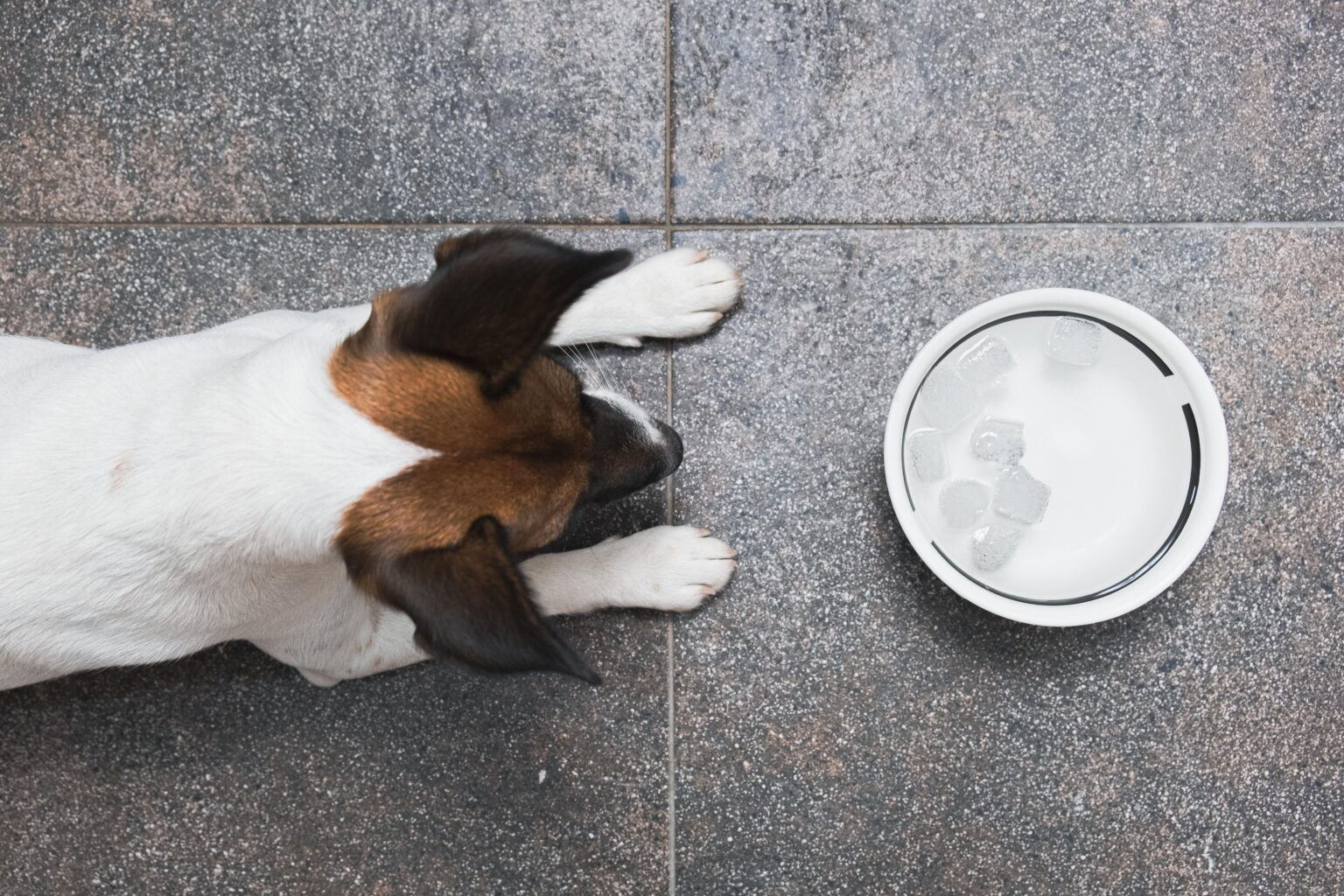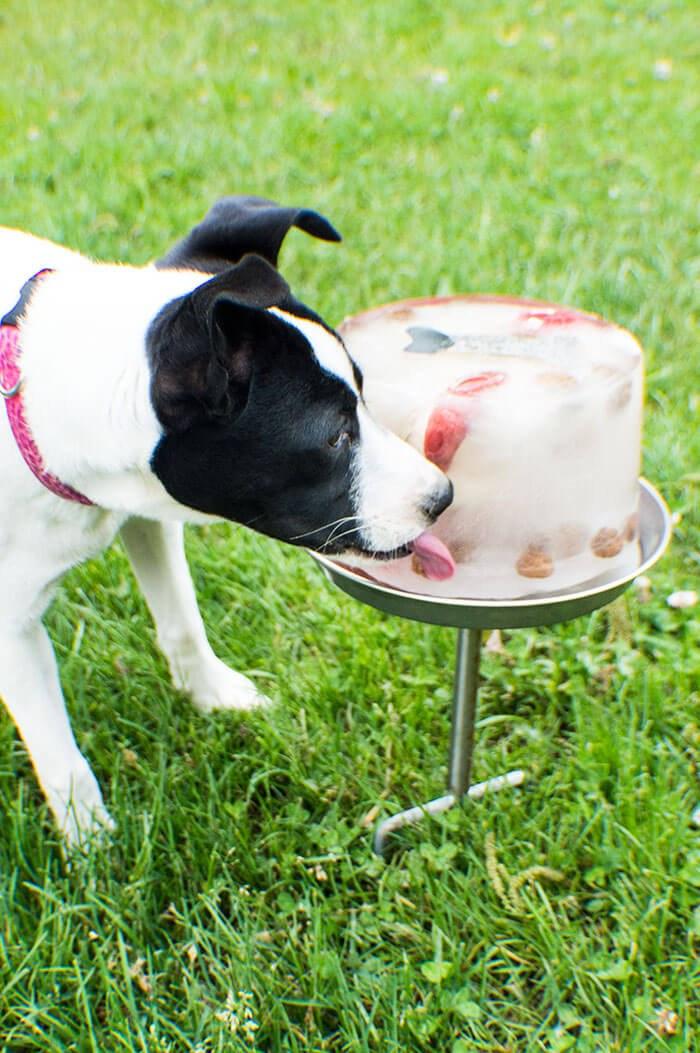As dog owners, we often want to spoil our furry friends with treats, especially during those hot summer days when a refreshing snack seems like the perfect way to keep them cool. Ice cubes might appear to be a harmless and fun option for your pup, but what if we told you that this simple indulgence could carry hidden risks?
In this article, we will explore the potential dangers of giving your dog ice, shedding light on how it can affect their health and well-being. By understanding the implications and considering safer alternatives, you can ensure that your canine companion stays happy, healthy, and cool without the risks associated with ice. So, let’s dive in and discover what you need to know to keep your beloved pet safe!
Table of Contents
- Understanding the Potential Dangers of Ice for Dogs
- How Ice Can Affect Your Dogs Digestive Health
- Alternatives to Ice: Safer Ways to Keep Your Dog Cool
- Practical Tips for Hydrating Your Dog in Hot Weather
- Q&A
- Wrapping Up
Understanding the Potential Dangers of Ice for Dogs
While ice may seem like a refreshing treat for dogs, it’s important to recognize the potential hazards it can pose. Chewing on hard ice can lead to dental issues, such as fractured teeth or enamel damage, which can be painful and require veterinary attention. Moreover, consuming ice can cause some dogs to experience digestive issues. The sudden chill can lead to contractions in their stomach, resulting in vomiting or discomfort. It’s crucial for pet owners to be mindful of these risks before offering their furry friends a frozen treat.
Additionally, temperature regulation is vital for dogs, especially in hot weather. Dogs do not sweat like humans; instead, they rely on panting and other mechanisms to cool themselves down. Offering ice can lead to abrupt temperature changes within their bodies, potentially resulting in hypothermia or other heat-related complications. To ensure your dog stays happy and healthy, consider safer alternatives for keeping them cool, such as:
- Chilled fruits (like watermelon or blueberries)
- Frozen yogurt specifically made for dogs
- Ice cubes made from broth or diluted fruit juices
How Ice Can Affect Your Dogs Digestive Health
When it comes to keeping your furry friend cool during hot summer days, many pet owners often turn to ice as a quick solution. However, feeding your dog ice can pose some hidden risks that may not be immediately apparent. Ice can create an environment in the stomach that may lead to digestive issues. For instance, the sudden exposure to extreme cold can cause the stomach to contract abruptly, which might result in cramping and discomfort. This, in turn, can hinder proper digestion, potentially leading to symptoms such as vomiting or diarrhea.
Moreover, large pieces of ice can present a choking hazard, especially for smaller breeds or enthusiastic chewers. When ice is ingested, it can break into sharp pieces that can scrape or harm the lining of the digestive tract. It’s important to keep an eye on how your dog reacts to cold treats. Consider these alternative cooling methods to protect your dog’s digestive health:
Chilled Water: Instead of ice, offer cool fresh water to ensure hydration without the risks.
Frozen Treats: Freeze dog-friendly ingredients like yogurt or mashed bananas in molds for a safe and enjoyable treat.
Cooling Mats: Provide a comfortable space for your pup to chill out without the ingestion risks associated with ice.
Alternatives to Ice: Safer Ways to Keep Your Dog Cool
When it comes to keeping your furry friend cool, there are several alternatives to ice that are both safe and effective. Consider offering your dog frozen treats made from natural ingredients. You can easily create these at home using ingredients like pureed fruits, vegetables, or even low-sodium broth. Simply blend your chosen ingredients, pour them into silicone molds, and freeze. Not only will your pup enjoy a tasty snack, but these treats will also help lower their body temperature while providing hydration. Some popular combinations include banana and peanut butter or watermelon and yogurt.
Another great method is to provide your dog with a cooling mat or bed. These specially designed products help to absorb and dissipate heat, creating a comfortable space for your pet to relax. Additionally, keeping fresh water available at all times is crucial, as it encourages hydration and helps regulate your dog’s body temperature. You might also consider using a pet-safe spray that provides a cooling effect when applied to your dog’s fur. Remember, keeping your dog cool doesn’t have to involve ice; there are numerous ways to ensure their comfort during hot days.
Practical Tips for Hydrating Your Dog in Hot Weather
Fresh Water: Always provide access to clean, fresh water. Change it frequently to keep it cool.
Portable Water Bowls: Invest in collapsible bowls to carry water on walks or trips, ensuring hydration is always within reach.
Frozen Treats: Instead of ice cubes, make frozen treats with dog-friendly ingredients like broth or fruits (like watermelon) to keep them hydrated and cool.
Limit Outdoor Time: Schedule walks during cooler parts of the day, such as early morning or late evening.
Shade and Ventilation: Create shaded areas in your yard or home where your dog can relax comfortably during peak heat hours.
It’s also vital to monitor your dog’s water intake closely. Signs of dehydration include dry gums, excessive panting, and lethargy. If you’re ever unsure, a simple skin pinch test can help; gently pinch the skin on the back of their neck and see if it returns to its original position quickly. Here’s a quick reference table for hydration signs and actions:
| Signs of Dehydration | Recommended Action |
|---|---|
| Dry mouth and gums | Encourage water intake immediately |
| Excessive panting | Move to a cooler area and provide water |
| Lethargy | Consult a vet if symptoms persist |
Q&A
Q1: Is it safe to give my dog ice cubes as a treat?
A1: While many dogs enjoy chewing on ice cubes, it can pose some risks. Ice can be hard on their teeth, especially for those with dental issues. Additionally, if your dog is prone to gulping food, ice cubes could lead to choking or gastrointestinal blockages. Always supervise your dog when giving them any hard treats.
Q2: What are the potential hazards associated with giving dogs ice?
A2: The primary concerns include dental fractures, choking, and the risk of an upset stomach. Some dogs may develop digestive issues from excessively cold treats, leading to discomfort. It’s important to consider your dog’s individual health and chewing habits before offering ice.
Q3: Are there any signs I should watch for if my dog has consumed ice?
A3: Yes, watch for signs of distress such as excessive drooling, coughing, gagging, or signs of discomfort after chewing on ice. If your dog seems lethargic, refuses to eat, or has any other unusual behavior, it’s best to consult your veterinarian.
Q4: Are there safer alternatives to ice cubes for cooling down my dog?
A4: Absolutely! Consider frozen fruits like blueberries or watermelon (without seeds) as a refreshing treat. You can also make homemade frozen dog treats using yogurt and pureed fruits. These options are not only cooler but also healthier for your pup.
Q5: Can ice help cool down my dog in hot weather?
A5: While ice can provide temporary relief, it’s essential to provide plenty of water and shade for your dog during hot weather. Avoid strenuous activities during peak heat hours and consider walking your dog during cooler times of the day. Ice should not be your only method for keeping your dog cool.
Q6: Is it okay to give my dog ice water?
A6: Giving your dog ice water in moderation can be fine, especially after they’ve been active. However, if your dog tends to gulp its water, it’s better to stick with cool (not icy) water to prevent any potential choking or stomach upset.
Q7: What should I do if my dog has an adverse reaction after consuming ice?
A7: If your dog shows any signs of discomfort or distress after consuming ice, monitor their condition closely. If symptoms persist or worsen, seek veterinary advice promptly to ensure your dog’s health and safety.
Q8: How can I help my dog cool down in the summer without using ice?
A8: You can provide plenty of fresh water, a cool place to lie down, and even damp towels to lounge on. Some pet owners invest in cooling mats or vests to help regulate their dog’s body temperature during hot days. Always ensure that your dog has access to shade when outside.
Q9: What’s the bottom line on giving dogs ice?
A9: While ice can be a fun treat for some dogs, it’s essential to understand the potential risks involved. Always consider your dog’s individual health, supervise them, and explore safer alternatives for keeping them cool. Consulting with your veterinarian can also provide tailored advice for your pet’s specific needs.
Wrapping Up
while it may be tempting to cool your furry friend down with ice on a hot day, it’s essential to understand the potential risks involved. Ice can pose hazards such as dental damage, choking, and gastrointestinal distress, which can lead to discomfort or more severe health issues. Always prioritize your dog’s safety and well-being by opting for safer alternatives, such as ice cubes made from dog-safe ingredients or providing fresh, cool water. As a responsible pet owner, staying informed helps ensure a happy and healthy life for your beloved companion. Remember, when it comes to treating your dog, a little wisdom goes a long way! Thank you for reading, and here’s to many happy and safe moments with your four-legged friend!

















